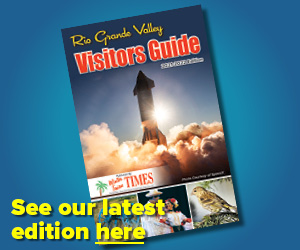- Details
-
Published: Wednesday, 30 October 2019 11:00
The South Texas Historical Association (STHA) will hold a two-day symposium this week. The symposium will feature exhibits, history related presentations and talks, and more.
Part of the international flavor at the upcoming South Texas Historical Association (STHA) Nov. 1-2 Symposium in Alamo is Octavio Herrera Perez from the University of Tamaulipas, Mexico. He will be speaking on “The Low Rio Bravo or Grande del Norte in the Historical Memory of an International Region” at 10:15 a.m. on the symposium’s opening day.
Perez will be followed by George Diaz from the University of Texas Rio Grande Valley discussing “Border Contraband.” In the afternoon that Friday, Alberto Rodriguez from Texas A&M Kingsville, has a talk titled “Performing Blackness in Mexico and the Borderlands: 1920-2000s”
Other topics related to South Texas’s heritage include the 1933 Rio Grande hurricane, Civil War General Philip Sheridan’s time on the border, descendants of founding families in the RGV, several other family histories and the background of the settling of the Alamo area. These speakers and others come from Texas A&M College Station, Texas State Historical Association, American Society of Sugarcane Technologies, RGV Hispanic Genealogical Society/Cameron County Historical Commission, Alamo Museum, independent scholars, regional historians and a retired CIA official.
The symposium will be preceded by a 6:30 p.m. reception Thursday, Oct. 31 at the Alamo Museum, 130 South Eighth St., a time to meet and greet speakers. Presentation of a patriotic quilt to a U.S. service veteran is also planned in coordination with a veteran’s exhibit.
The symposium, which is free, except for the $10 lunch each day, begins with a welcome at 9 a.m. Nov. 1 at Bowie Parental Engagement School on Bowie Avenue in Alamo. Emilio Zamora, president of STHA will be part of the welcoming portion along with Alamo Mayor Diana Martinez, Carroll Brinchfield, of STHA, Idolina Vela, president of the Friends of Alamo Museum, and Alejandro Oyoque, museum curator and director.
In addition to the 30-minute history presentations each day, there will be exhibits in one of the classrooms that include model railroading, a Native American arrowhead collection, and Valley baseball. Posters from a middle school contest on South Texas history will be on display, with the winner to be featured on the cover of the STHA’s biannual academic journal. Vendors also will have displays and a STHA silent auction will be conducted.
The symposium is one of two held annually as part of the STHA’s 65-year effort to collect, preserve and disseminate historical records and data related to South Texas along with added emphasis on the Tamaulipan background and the colony of Nuevo Santander. This is the first two-day event in STHA history.
For more information, call 956-961-4398 or stop in at the museum on Eighth Street.
- Details
-
Published: Wednesday, 30 October 2019 10:30
 While Halloween is thought to be just for kids, there are often activities for adults too. Most of the events in the Rio Grande Valley are geared toward families and children, but there are some that everyone can take part in. Some of the Winter Texan parks have their own events as well. Here are a few outside of the parks that we adults can enjoy.
While Halloween is thought to be just for kids, there are often activities for adults too. Most of the events in the Rio Grande Valley are geared toward families and children, but there are some that everyone can take part in. Some of the Winter Texan parks have their own events as well. Here are a few outside of the parks that we adults can enjoy.
The City of Pharr is having a Nightmare on Fir Street tonight from 7:30 to 10 p.m. at the Pharr Aquatic Center, 1000 S. Fir St. Your choice of dressing up for the event, it features Halloween themed activities, a haunted house, and of course candy. They will also be holding a canned food drive, so bringing a non-perishable canned item is encouraged.
The Gladys Porter Zoo always holds their Boo at the Zoo. The last two nights of this event are tonight and tomorrow, from 6 to 9 p.m. Tickets are $2.50 per person, free for zoo members. The event boasts a spooky good time including trick or treating, carnival-style games and more.
Hidalgo will have a Dia de los Muertos Halloween Fiesta on October 31 with a parade beginning at 6 p.m., a movie at 8 p.m. and a haunted house will be available the entire evening. The event will be located at Hidalgo Pumphouse Museum and World Birding Center, 902 S. 2nd St.
A Dia de los Muertos Procession will be held in Brownsville on November 1 at 6 p.m. The events will continue through November 2 at 10 p.m. Location for the main events is Carlotta K. Petrina Cultural Center at 1452 E. Madison St. The procession will take place from the historical cemetery and will include the market square, Brownsville Performing Arts Academy and the Cultural Center.
The International Museum of Fine Arts will be holding their A Dia de los Muertos Festival on November 2 from 10 a.m. to 5 p.m. On exhibit will be community altars honoring humanitarian leaders who inspire the RGV community and beyond. For extra fees, visitors can decorate a sugar skull. There is a schedule of events throughout the day that include a Catrina contest, a performance by the UTRGV Ballet Folklorico, story times, crafts, games, vendor market, food trucks, and a lecture titled Mexico, Bones and Life. For more information visit their website at theimasonline.org.
The Museum of South Texas History will have an event on November 2 from 4 to 10 p.m. The museum will celebrate and commemorate the traditions of religious and spiritual worship. There will be an altar exhibit featuring 11 altars intended to tell stories, share memories and honor the lives of the dearly departed. The exhibit will be on display through November 17.
A Mystery Altar will feature vintage photographs of unidentified people from the photograph location in the Margaret H. McAllen Memorial Archives. The altar will honor the nameless and carry a preservation message about the importance of documenting family photographs. Another altar, located in the Grand Lobby, constructed by CISD Longoria Middle School art students, will honor the legendary Rogelio Botello Rios, radio and television personality who passed away in 2017.
The event is included with museum admission. The museum is located at 200 N. Closner Blvd. in Edinburg.
We are sure this is not a complete list of Halloween events in the area. Look at your city websites and the museums close to you to see if they are holding something closer to you.
- Details
-
Published: Wednesday, 30 October 2019 00:00
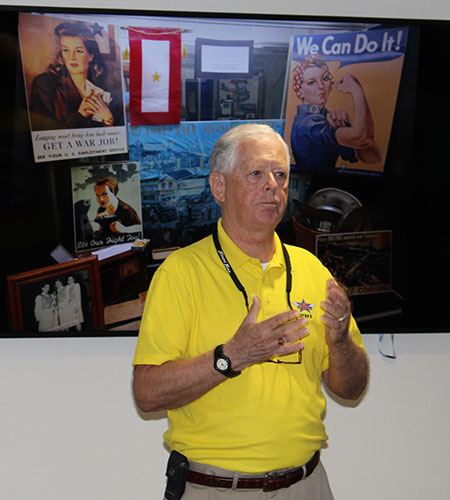 Editor’s Note: This story about the Commemorative Air Force will take place in two stories. This first part will give you a history and purpose for the CAF and what they do. Next week we will let you know how you can help them achieve their ongoing mission.
Editor’s Note: This story about the Commemorative Air Force will take place in two stories. This first part will give you a history and purpose for the CAF and what they do. Next week we will let you know how you can help them achieve their ongoing mission.
According to Commemorative Air Force history, the CAF started with just a single plane, right here in the Rio Grande Valley. Lloyd Nolen, a crop duster pilot that had recently returned from WWII, and a small group of ex-service pilots pooled their money together to purchase a P-51 Mustang in 1957. Together they formed an organization to share the expense of maintaining the Mustang and their love for the plane.
In short time, through their efforts, the group eventually added a pair of F8F Bearcats to the collection. It was then they realized what they needed to do – save the aircraft that saved the world. They created what is now the Rio Grande Valley Wing Museum of the CAF – now a worldwide organization with over 10,000 members in 75 wings/detachments and over 150 planes, known as the Ghost Squadron, and other vehicles from WWII, Korea and Vietnam. They now operate the largest fleet of historic combat aircraft.
America had produced nearly 300,000 aircraft by the end of the war. By 1960, most of the planes from the WWII era were gone – destroyed, lost, in great disrepair, and forgotten. Most, what remained, were empty shells, stripped of wiring, armament and instruments; others were broken up, crushed for scraps or smelted. As CAF says, “all radio channels of their crews faded away.”
What started as a hobby for these few men, grew to an urgent mission to save history. The survivors were few, and Nolen, and his group, were eager to have their stories known. They set out to try to preserve one of every type of plane from WWII. Once they began finding planes, it was their goal to restore and bring history alive, to inspire greatness in future generations.
“Airplanes weren’t meant to sit on the ground and to sit at museums gathering dust,” said the CAF.
“Rather, they should be seen in their natural environment through flight. Their engines rumbling, propellers turned to life, their wings shivering in anticipation for flight. These machines were meant to fly, to inspire, and to fulfill the humans desire to dance among the clouds.”
Today, among their collection, the CAF owns one of the only remaining flying Boeing B29 super Fortress Bomber (FiFi) and the Curtis SB2C Helldiver carrier base dive bomber; an original Japanese Mitsubishi A6M30 carrier-based fighter; and a Russian I16 Polikarpov fighter.
With their collection, the CAF dedicated each Wing to have a different collection of aircraft, a different specialty. The RGV Wing has trainer aircraft from WWII and a few vehicles as well.
“The history and service of the men and women who flew these airplanes are both compelling and inspiring,” says the CAF.
Tom Santos, Executive Officer of the RGV Wing, said it takes a lot to be a pilot. You must know more than just how to fly planes. There is a special certification one needs to fly these planes. Once certified, pilots keep a logbook on how much they fly and when to make sure they put in their flights hours and the planes get the airtime they need.
Chris Hughston, operations manager at the RGV CAF, said there is an intense culture of safety when it comes to flying the planes. For example, anyone that flies in one of the airplanes must wear one of the real flight suits. They are fire retardant, not fireproof, and will buy you an extra 30 seconds to a minute if you are in open flame. It will also keep burning things off you – like oil and gas.
Hughston pointed out that a lot of the maps they use today are some of the same they used so many years ago. What they have started incorporating though, is having the same map on tablets, versus the paper. This allows them to see more than what is on paper, like navigation and radar overlay. Being that most of the planes are open cockpit, a paper map can be lost very easily when you are trying to read the chart/map and keep your hands on the controls.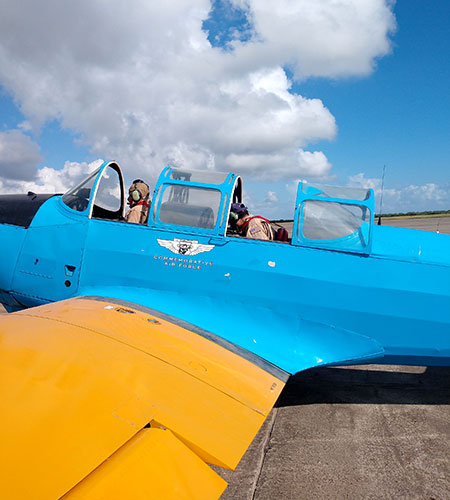
He recalled flying their oldest plane, a 1928 bi-plane – it was a beautiful day as he was getting ready to land when the aircraft’s registration, an index card sized piece of cardboard, came flying out of the airplane, hitting him in the face.
“It was not a pretty landing,” he said, and there were many people that were witness to that. His registration card ended up out on the runway.
He laughed saying that when you come in and do a beautiful landing, there is no one around to see, but when you mess up, all of the sudden everyone is out there watching.
The CAF can use anyone he said. You don’t have to be a pilot to help at the CAF. Ground help is needed as well. There is other antique machinery at the airport. They have trucks, jeeps, support equipment and a 1928 Model-T – which is a two-owner vehicle getting its engine rebuilt for the second time.
The CAF has created an educational traveling exhibit and series called Rise Above that feature’s unsung heroes such as the Tuskegee Airmen and WASP. These are stories that are shared in the hopes of inspiring others to rise above their differences, their challenges, to achieve their goals.
The CAF says the stories shared in their exhibits are only the beginning.
“It’s only limited by the number of untold stories of valor” in America’s aviation history.
The American Air Powered Heritage Museum in New York, a visitor can see the single largest collection of authentic WWII aviation nose art, cut by firemen axes and chainsaws from the fuselages of derelict army air force bombers awaiting demolition in 1946. This display shows the folk art of how the pilots and crew members personalized the very aircraft in which their lives depended on during the war.
The RGV Wing has its own museum as well. Although space is limited, there are quite a few things to look at. These are artifacts that have been collected over time or have been donated by members or by local WWII vets and families. Tears were present as a member of the RGV CAF spoke about some of the artifacts they have in their museum.
The museum curator, David Christopher, shared stories of some of the artifacts and how they got there or what they have meant to visitors.
An older couple came into the museum and the wife was startled. She started crying, said Christopher. When the couple approached a certain display, the wife had to walk away and compose herself.
The display contained a picture of a bomber with his crew. One of the volunteers at the time, found out that the picture had the lady’s her ex-husband in it. He had left to fight in the war and did not return alive.
Christopher said he must do quite a bit of research on how to take care of some of the artifacts they have. One thing he has researched is how to take care of leather since they have several leather jackets on display.
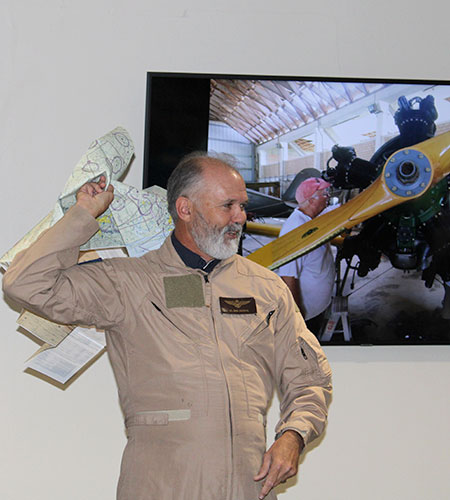
He was taking care of the jacket when he realized there was something in one of the pockets. He gently reached into that pocket and found a bag of ashes. Checking on some of the displays and noticed a leather jacket that needed some extra care and he wanted to make sure it stayed preserved in the south Texas heat.
For a while, Christopher choked up and Santos had to help him continue the recollection.
A member had donated the jacket. When they talked to him, he told them it was the ashes of his father.
“His father wanted his ashes to stay with his jacket.”
They still have this jacket on display, with the man’s ashes safely in the pocket.
The RGV Wing is in Port Isabel at the Cameron County Airport. For more information, or to set up a tour, call Christopher at 970-397-4604 or Santos at 956-579-2611. Information can also be found on their website at www.rgvcaf.org.
- Details
-
Published: Friday, 25 October 2019 17:08
UTRGV Office of Public Art is hosting a new art exhibit at the UTRGV Performing Arts Complex Lobby on the Edinburg Campus called DreamScapes. The exhibit is a posthumous celebration of the lives and talents of a family of area artists – Maxine McClendon, Edward Edson Nichols and Christopher Nichols.
McClendon was an internationally renowned artist well-known for her acrylic on stuffed canvas. Her husband, Edward, was an art professor at UTRGV legacy institution UT Pan American for 33 years, making an impact on hundreds of artists in South Texas before retiring from teaching in 1999. Their son, Christopher, a UTPA alumnus, was known for his watercolor scenes.
Dr. Dahlia Guerra, assistant vice president for Public Art, said this exhibit is a wonderful way to view the landscape through the eyes of three people who obviously loved the area.
“The artistic creations of the Nichols family celebrate the beautiful landscapes and traditions of the Rio Grande Valley and Mexico,” she said.
The exhibit, curated by Elena Macias, professor of art in the UTRGV School of Art, will run from 9 a.m. to 5 p.m. daily and during all evening concerts. The exhibit will run through February 7, 2020.
For more information on the exhibit, contact the UTRGV Office of Public Art at (956) 665-2353. The UTRGV Performing Arts Complex is located at 1201 W. University in Edinburg.
- Details
-
Published: Thursday, 24 October 2019 08:00
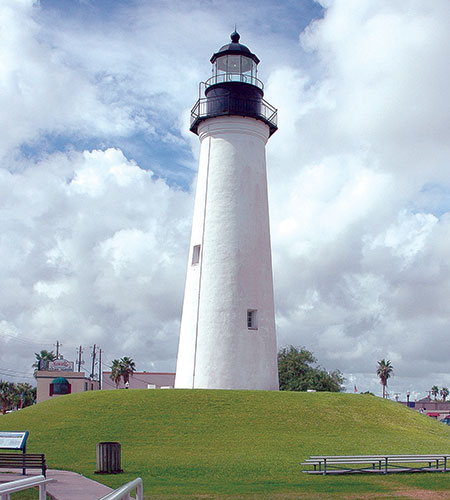 Port Isabel Lighthouse was one of eight state historic sites welcomed by the Texas Historical Commission last month. The lighthouse was previously managed by the Texas Parks and Wildlife Department.
Port Isabel Lighthouse was one of eight state historic sites welcomed by the Texas Historical Commission last month. The lighthouse was previously managed by the Texas Parks and Wildlife Department.
The properties were transferred on the recommendation of the Texas Sunset Advisory Commission. The action will allow both the THC and TPWD to improve efficiency by focusing each agency on its core mission – THC’s role as the state historic preservation office, and TPWD’s as steward of the state’s impressive natural resources and hunting, fishing and outdoor recreation attractions.
“Our primary goal as stewards of these sites has always been the preservation of these iconic landmarks for the enjoyment of current and future Texans. We entrust the future care of these notable parks to the capable hands of the THC and know they will continue these high standards of maintenance and operations going forward,” said Carter Smith, Executive Director of TPWD. “TPWD is proud to have been the caretakers of these historic sites for many decades, and we will continue to care for the hundreds of historic buildings, archeological sites, and other cultural resources that exist within state parks and natural areas across Texas.”
The City of Port Isabel held a celebration on October 2 with other city organizations, the THC vice-chair and the public to announce the transfer.
“We’re all looking forward to the exciting future that this partnership brings. The Lighthouse is important and vital to us. The City of Port Isabel and the Port Isabel Economic Development Corporation have been partners with the State for many decades and are happy to continue in that role,” says Calvin Byrd, Port Isabel Economic Development Board Chair.
“We’re happy to co-host this event with the Texas Historical Commission and Commissioners on this important day and invite the public to join in the celebration,” added City Manager Jared Hockema.
The Port Isabel Lighthouse, originally called Point Isabel, was constructed in 1852 to guide ships through the Brazos Santiago Pass into the Laguna Madre. Built at the direction of President James K. Polk, it was also used for the protection of Fort Polk, once located along the coast where Port Isabel now sits.
Opened as a state park in 1952, it is the only lighthouse now open for viewing in the State of Texas. The lighthouse Keeper’s Cottage on the grounds now houses the Port Isabel Chamber of Commerce.
The lighthouse is open daily from 9 a.m. to 5 p.m. For more information on admission and its history, visit www.portisabellighthouse.com or call (956) 943-2262.
Other TPWD sites transferring to the THC include San Jacinto Monument and Battleground in Harris County; Washington-on-the-Brazos and Barrington Plantation in Washington County; Kreische Brewery and Monument Hill in Fayette County; Lipantitlán in Nueces County; and Fanthorp Inn in Grimes County.
“Texas Parks and Wildlife and their professional staff have done impressive work stewarding these historic places,” said Mark Wolfe, THC Executive Director. “We welcome this challenge to build on their legacy and continue the preservation of these unique sites for new generations of visitors to enjoy. We are pleased that we will be able to work with many of the same staff who have operated and maintained all the transferring sites. We welcome them and these sites to the Texas Historical Commission family.”
Additionally, the 86th Legislature turned management of the Star of the Republic Museum in Washington County (part of the Washington-on-the-Brazos complex) to the THC, effective Jan. 1, 2020. The THC is working with the site’s owner, Blinn College, on management logistics; the THC may assume operation of the museum prior to the beginning of the year.
The addition of the new sites means that the THC now manages 31 State Historic Sites representing nearly every era of Texas’ storied history—from the legends and culture of the original American Indian inhabitants of Texas, to the epic stories of the state’s revolution and independence, to the humble birthplace of one of the nation’s greatest leaders, President Dwight D. Eisenhower.
To learn more about these sites or to plan your next trip, visit StoriedSites.com.
- Details
-
Published: Thursday, 24 October 2019 06:00
 The seasons may change but one thing doesn’t – the Texas Quilt Museum will always have interesting and unique exhibits which change out quarterly. Their fall displays include Fascinating Rhythm: Art Quilts by Katie Pasquini Masopust and Mama’s Got the Blue. They will both be on display until December 22.
The seasons may change but one thing doesn’t – the Texas Quilt Museum will always have interesting and unique exhibits which change out quarterly. Their fall displays include Fascinating Rhythm: Art Quilts by Katie Pasquini Masopust and Mama’s Got the Blue. They will both be on display until December 22.
Read more: Texas Quilt Museum exhibit showcases quilt legend, antique masterpieces
- Details
-
Published: Wednesday, 23 October 2019 00:00
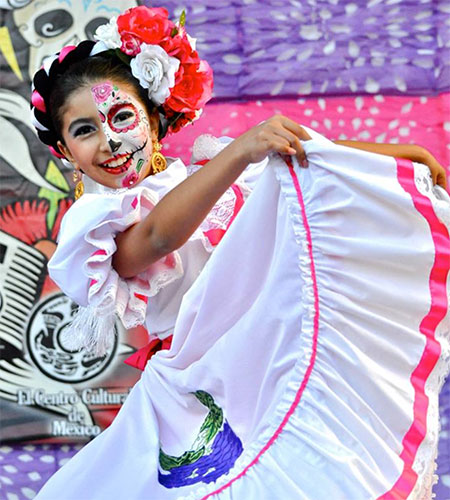 Every year, in an effort to not only preserve the local history but also to celebrate the local culture, Mission Historical Museum hosts folklife festivals that indulge in the local traditions. This time of year, it’s the Day of the Dead festival. The festival will be held on October 26 from 4 to 9 p.m.
Every year, in an effort to not only preserve the local history but also to celebrate the local culture, Mission Historical Museum hosts folklife festivals that indulge in the local traditions. This time of year, it’s the Day of the Dead festival. The festival will be held on October 26 from 4 to 9 p.m.
This year’s Day of the Dead Festival: Noche de Calacas will consist of various attractions. Artisans and food vendors will take over the street and be selling items such as tacos de bistec, tacos de tromp, empanadas de pollo and de picadillo, brisket sandwiches, funnel cakes and more. This is a chance to enjoy what locals have to offer.
The event will also feature free face painting and carnival rides. Entertainment will be performed by Mission Parks and Recreation Folklorico and the Crescendo Music Institute. International entertainment will be provided by Mission’s very own sister cities, Francisco I. Madero, Coahuila, Mexico and Valle Hermoso, Tamaulipas, Mexico.
Featured attractions include an exhibition in the main building including a community altar exhibit, a traditional sand painting done by artists from Mexico, and an outdoor altar replicating the historic La Lomita Chapel. Installation of the sand art will begin October 25.
The Mission Historical Museum is a 501 c 3 non-profit organization that collects, preserves, exhibits and promotes the history and cultural heritage of Mission and its surrounding communities. We are located at 900 Doherty Avenue and are open Tuesday – Friday, 10 am – 5 pm and Saturdays, from 10 am – 2 pm. For more information on this program or any upcoming events contact the museum at 956-580-8646, check out our website www.missionmuseum.org
- Details
-
Published: Wednesday, 23 October 2019 00:00
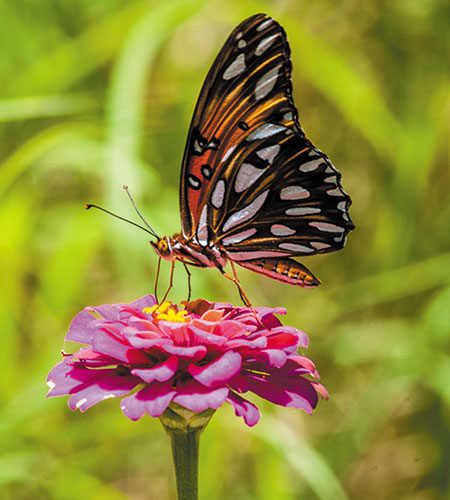 Join the National Butterfly Center on Saturday, November 2 – Tuesday, November 5, for the 24th Annual Texas Butterfly Festival, and see for yourself why USA Today calls Mission, Texas, “the butterfly capital of the USA.”
Join the National Butterfly Center on Saturday, November 2 – Tuesday, November 5, for the 24th Annual Texas Butterfly Festival, and see for yourself why USA Today calls Mission, Texas, “the butterfly capital of the USA.”
Renowned for a volume and variety of wild, free-flying butterflies that cannot be found anywhere else in the country, deep south Texas is home to the country's premier butterfly event, featuring field trips and educational activities for beginners to experts, private gardens and guided 'hot spot' tours, The North American Butterfly Photo Contest, and a free community day fun.
The three-day event starts off with the Running of the Monarchs 5K Trail Run and one Mile Fun Run. The run will be held across the National Butterfly Center’s grounds and gardens. Participants must pre-register for the event to receive a commemorative Monarch Medal. The entry fee is $24 for adults and $12 for children. All funds are used to support the environmental conservation work of the center. Seed bombs will be provided to participants to throw along the route of the run.
The community day will be held from 9 a.m. to 2 p.m. Visitors can learn how to make their own Banana Brew, attend arts and crafts session, hunt the hackberry trail, pin the tail on the Swallowtail, and more.
The National Butterfly Center is honored to host the festival and provide attendees a remarkable and rewarding outdoor experience. Registrants will spend three days exploring renowned public lands and private properties with world-class trip leaders, where you may reasonably expect to see more than 60 species in a day.
Last year, attendees from 23 states and four countries registered to experience one of the most biologically diverse areas in North America, with the assistance of expert guides. Come see for yourself why the Rio Grande Valley has earned worldwide recognition for its outstanding butterfly and birding spots, inviting thousands of visitors each year to discover its remarkable assortment of preserves, refuges, nature parks, trails, and more.
Whether you are an accomplished naturalist or a beginner enthusiast, the Texas Butterfly Festival is the place to be. Here, many eyes 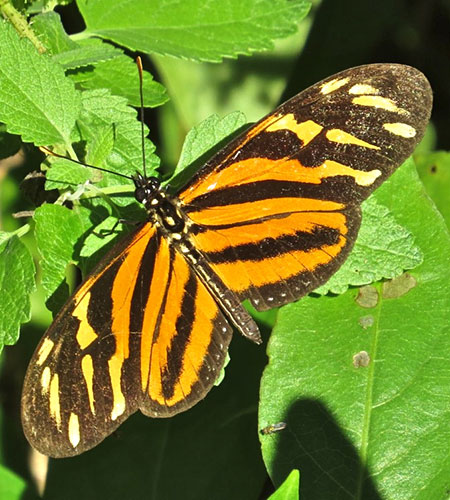 make for exciting discoveries, including U.S. records, super rarities, subtropical strays, seldom-seen species, 'life' and chase butterflies that may only be found in the Lower Rio Grande Valley (LRGV), where the river winds its way toward the Laguna Madre at the Gulf of Mexico. This unique region encompasses no fewer than 11 different types of habitat, from tidal wetlands to riparian forest, brushland scrub to prairie savanna, and is home to more than 1,200 different species of plants, 500 species of birds, 200 vertebrate species, roughly 300 species of butterflies, and over 90 species of dragonflies.
make for exciting discoveries, including U.S. records, super rarities, subtropical strays, seldom-seen species, 'life' and chase butterflies that may only be found in the Lower Rio Grande Valley (LRGV), where the river winds its way toward the Laguna Madre at the Gulf of Mexico. This unique region encompasses no fewer than 11 different types of habitat, from tidal wetlands to riparian forest, brushland scrub to prairie savanna, and is home to more than 1,200 different species of plants, 500 species of birds, 200 vertebrate species, roughly 300 species of butterflies, and over 90 species of dragonflies.
To learn more about the one and only Texas Butterfly Festival, where to stay, what to do, and how to participate, visit the website at www.texasbutterflyfestival.com.
- Details
-
Published: Wednesday, 23 October 2019 00:00
South Texas archaeology is the presentation topic at the October 28 meeting of the South Texas Border Chapter of Texas Master Naturalists.
Guest speaker is Donna Otto, a 25-year member of the Texas Archeology Society, a member of the South Texas Archeological Society and a Texas Historical Commission Archeological Steward. She is a South Texas Border Chapter Texas Master Naturalist.
Read more: Texas Master Naturalist meeting focuses on South Texas archeology
- Details
-
Published: Wednesday, 23 October 2019 00:00
 It's a bird. It's a plane. It's Superman.
It's a bird. It's a plane. It's Superman.
For the Rio Grande Valley, especially in Harlingen, it's a bird. The Rio Grande Valley Birding Festival is ready for blast off. Scheduled to begin on November 6, the festival will run through November 10.
Read more: Harlingen – Prefect place to celebrate birds
- Details
-
Published: Wednesday, 16 October 2019 00:00
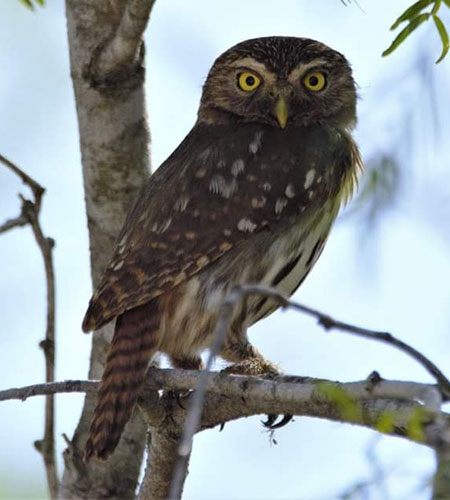 The Rio Grande Valley Birding Festival, going on its 26th year, is nothing new to Harlingen, but this year they plan to shake it up a bit. The RGVBF is keeping things fresh and exciting with a change in location, new field trip destinations, and a few other changes that will be sure to excite the birder and all its attendees.
The Rio Grande Valley Birding Festival, going on its 26th year, is nothing new to Harlingen, but this year they plan to shake it up a bit. The RGVBF is keeping things fresh and exciting with a change in location, new field trip destinations, and a few other changes that will be sure to excite the birder and all its attendees.
The festival will be held at the Harlingen Convention Center this year and expects to see hundreds of attendees. Last year the event saw 600 attendees that came from 41 states and six countries. Attendees come to see the many birds that are only seen in the Valley and take part in one-of-a- kind field trips.
Because of the Valley’s unique ecosystem comprised of coastal marshes and plains in the east, desert chaparral in the west and a lush corridor of riparian woodlands along the river, the Valley has 30 unique species of birds. The RGV is also major migration corridor because of the convergence of two major flyways, the Central and Mississippi.
The big numbers aren’t that bad for the Valley birder, and those that come and visit just to see the birds. Of 950 bird species in North America, the United States has over 800, Texas has 600, and more than 500 of those can be found in the Rio Grande Valley.
The birding festival began in 1994 when the Harlingen Area Chamber of Commerce and members of the birding community capitalized on the RGV’s biodiversity with an initiative to create this one-of-a-kind birding festival. Propelled by volunteers that first year, and funded by sponsors, the festival was a success and served as a model to many festivals across the country and abroad. Birding and nature tourism were making waves and the RGV was on the leading edge.
According to coordinators, last year’s event brought three million dollars to the local economy. According to a recent Texas A&M Economic Impact Study, ecotourism has an economic impact of nearly half a billion dollars on the Rio Grande Valley annually, extrapolating over 6,000 jobs in the Valley.
The success of ecotourism in the Valley has led other cities to create festivals and events where the wildlife is celebrated. The Valley also has the World Birding Centers, nine distinctly different nature centers, that draw thousands of visitors throughout the Valley.
In previous years, donations have been used on projects for the Red-crowned Parrots and Harris’s Hawks. Last year the Tejano Parrot Project was able to purchase telemetry collars and tracking equipment. Volunteers have been able to conduct weekly roost surveys in Brownsville, Harlingen, Weslaco and McAllen utilizing the tracking equipment on collared birds in three of those roost areas. Funds from this year will be used to purchase additional collars for birds in other Valley communities to continue gathering behavior information on these amazing parrots that visit the Valley.
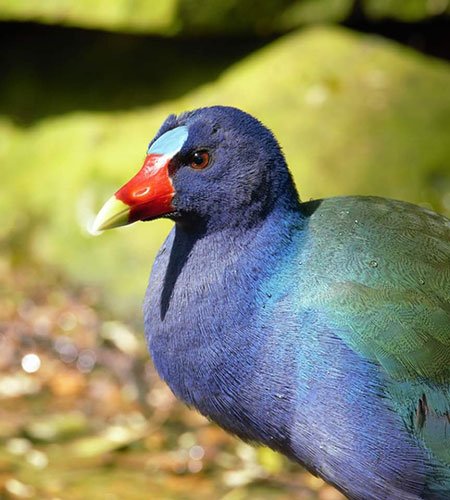 The Harris’s Hawk project was able to use donations to purchase climbing equipment enabling researchers to access and band chicks in 22 nests. Donations this year will be used to study interaction of these banded birds with the adults from the same nests and to compare and analyze DNA samples extracted during the banding process.
The Harris’s Hawk project was able to use donations to purchase climbing equipment enabling researchers to access and band chicks in 22 nests. Donations this year will be used to study interaction of these banded birds with the adults from the same nests and to compare and analyze DNA samples extracted during the banding process.
A new project added this year is the South Texas Hummingbird Banding Project. This effort will provide the lower Rio Grande Valley with its first and only hummingbird bander. Buff-bellied Hummingbirds of the Rio Grande Valley will be the focus of this project.
Speaker presentations will be held on Thursday and Saturday afternoons that will give more details of these projects.
This year’s festival will include family activities and nature activities that will be held at the convention center on Saturday and Sunday. Activities include the Kiskadee Korner, a raptor show, a bird walk and the Birders Bazaar. Special events during the festival include a silent auction, a student awards ceremony recognizing artwork area students have drawn, a Star Party on Wednesday evening, and the American Birding Association’s 50th anniversary podcast bash.
Field trips include visits to the local Birding Centers, State Parks and refuges, McAllen Nature Center, Laguna Madre, Bahia Grande, local battlegrounds, a ride on the Riverside Dreamer, biking field trips, breakfast with the birds at The Inn at Chachalaca Bend, a butterfly field trip, South Padre Island, and more. Topics discussed during field trips include ornithology, parrots of the area, banding, Valley raptors, and photography. There will be workshops on how to do birding with technology, how to record bird sightings, learning to listen to the sounds around you, improving field identification skills, and so much more.
The festival will run from November 6 through 10 where visitors will descend on the City of Harlingen, eager to experience all that makes the RGV so special. There will be music, food, wildlife, habitats to explore, and of course, friendly, warm people.
There is a $25 registration fee for everyone attending. Field trips are designed for beginners to advanced. Prices for field trips range – all prices can be found online. Prices for seminars and keynotes range between $10 and $20, but a Kiskadee Pass is available for $30 which allows entry to all of those being offered in the auditorium. These tickets must be purchased during open registration, before the day of the event. Individual tickets for seminars and other events (excluding field trips) can be purchased at the door. The Bargain Bazaar and some other events are free and open to the public. Please visit their website to get a full list of details.
The Harlingen Convention Center is located at 701 Harlingen Heights Dr. For more information and full list of field trips, visit www.rgvbf.org.

 While Halloween is thought to be just for kids, there are often activities for adults too. Most of the events in the Rio Grande Valley are geared toward families and children, but there are some that everyone can take part in. Some of the Winter Texan parks have their own events as well. Here are a few outside of the parks that we adults can enjoy.
While Halloween is thought to be just for kids, there are often activities for adults too. Most of the events in the Rio Grande Valley are geared toward families and children, but there are some that everyone can take part in. Some of the Winter Texan parks have their own events as well. Here are a few outside of the parks that we adults can enjoy. Editor’s Note: This story about the Commemorative Air Force will take place in two stories. This first part will give you a history and purpose for the CAF and what they do. Next week we will let you know how you can help them achieve their ongoing mission.
Editor’s Note: This story about the Commemorative Air Force will take place in two stories. This first part will give you a history and purpose for the CAF and what they do. Next week we will let you know how you can help them achieve their ongoing mission.

 Port Isabel Lighthouse was one of eight state historic sites welcomed by the Texas Historical Commission last month. The lighthouse was previously managed by the Texas Parks and Wildlife Department.
Port Isabel Lighthouse was one of eight state historic sites welcomed by the Texas Historical Commission last month. The lighthouse was previously managed by the Texas Parks and Wildlife Department. The seasons may change but one thing doesn’t – the Texas Quilt Museum will always have interesting and unique exhibits which change out quarterly. Their fall displays include Fascinating Rhythm: Art Quilts by Katie Pasquini Masopust and Mama’s Got the Blue. They will both be on display until December 22.
The seasons may change but one thing doesn’t – the Texas Quilt Museum will always have interesting and unique exhibits which change out quarterly. Their fall displays include Fascinating Rhythm: Art Quilts by Katie Pasquini Masopust and Mama’s Got the Blue. They will both be on display until December 22. Every year, in an effort to not only preserve the local history but also to celebrate the local culture, Mission Historical Museum hosts folklife festivals that indulge in the local traditions. This time of year, it’s the Day of the Dead festival. The festival will be held on October 26 from 4 to 9 p.m.
Every year, in an effort to not only preserve the local history but also to celebrate the local culture, Mission Historical Museum hosts folklife festivals that indulge in the local traditions. This time of year, it’s the Day of the Dead festival. The festival will be held on October 26 from 4 to 9 p.m. Join the National Butterfly Center on Saturday, November 2 – Tuesday, November 5, for the 24th Annual Texas Butterfly Festival, and see for yourself why USA Today calls Mission, Texas, “the butterfly capital of the USA.”
Join the National Butterfly Center on Saturday, November 2 – Tuesday, November 5, for the 24th Annual Texas Butterfly Festival, and see for yourself why USA Today calls Mission, Texas, “the butterfly capital of the USA.” It's a bird. It's a plane. It's Superman.
It's a bird. It's a plane. It's Superman.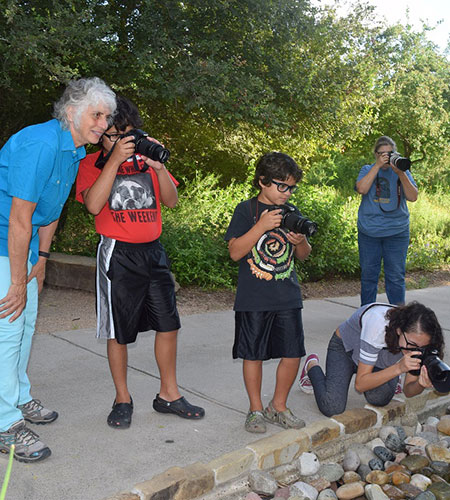 The Edinburg Scenic Wetlands and World Birding Center (EWBC) invites the community to enjoy free fun during the monthly Spectacular Saturday Series. On the last Saturday of each month, the entry fee is waived for all visitors from 8 a.m. to 6 p.m.
The Edinburg Scenic Wetlands and World Birding Center (EWBC) invites the community to enjoy free fun during the monthly Spectacular Saturday Series. On the last Saturday of each month, the entry fee is waived for all visitors from 8 a.m. to 6 p.m.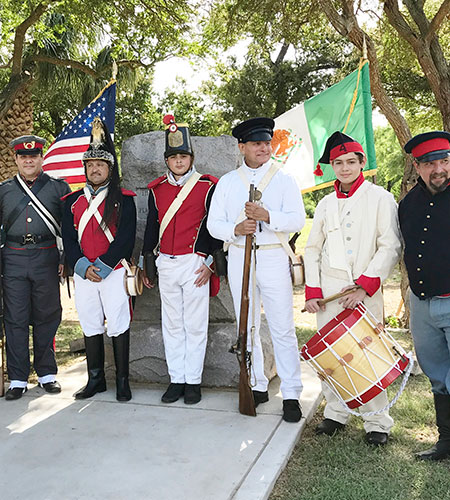 Put on your Indiana Jones hat and get ready for adventures in archeology at Palo Alto Battlefield National Historic Park on October 19 from 10 a.m. to 1 p.m.
Put on your Indiana Jones hat and get ready for adventures in archeology at Palo Alto Battlefield National Historic Park on October 19 from 10 a.m. to 1 p.m. The Rio Grande Valley Birding Festival, going on its 26th year, is nothing new to Harlingen, but this year they plan to shake it up a bit. The RGVBF is keeping things fresh and exciting with a change in location, new field trip destinations, and a few other changes that will be sure to excite the birder and all its attendees.
The Rio Grande Valley Birding Festival, going on its 26th year, is nothing new to Harlingen, but this year they plan to shake it up a bit. The RGVBF is keeping things fresh and exciting with a change in location, new field trip destinations, and a few other changes that will be sure to excite the birder and all its attendees. The Harris’s Hawk project was able to use donations to purchase climbing equipment enabling researchers to access and band chicks in 22 nests. Donations this year will be used to study interaction of these banded birds with the adults from the same nests and to compare and analyze DNA samples extracted during the banding process.
The Harris’s Hawk project was able to use donations to purchase climbing equipment enabling researchers to access and band chicks in 22 nests. Donations this year will be used to study interaction of these banded birds with the adults from the same nests and to compare and analyze DNA samples extracted during the banding process.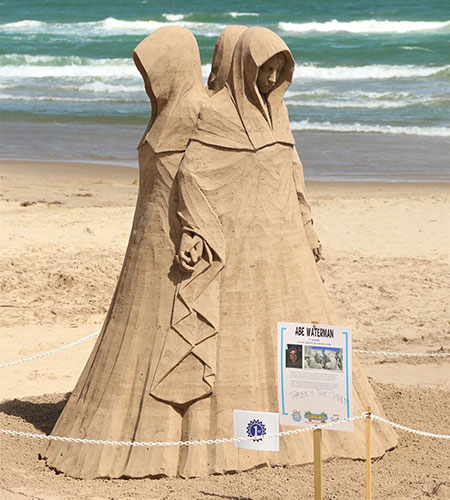 The 32nd SandCastle Days was held October 2 through 6 where attendees had the chance to view sandcastles built by 12 master sandcastle builders. This year’s builders came from as far as the Netherlands and Canada.
The 32nd SandCastle Days was held October 2 through 6 where attendees had the chance to view sandcastles built by 12 master sandcastle builders. This year’s builders came from as far as the Netherlands and Canada. Each year the event boasts live music, art booths, great food, and exciting evenings. SandCastle Days also includes activities for all ages and activities for families. Attendees also have the opportunity to participate in SandCamps where they can learn from experienced sandcastle builders. The event is free.
Each year the event boasts live music, art booths, great food, and exciting evenings. SandCastle Days also includes activities for all ages and activities for families. Attendees also have the opportunity to participate in SandCamps where they can learn from experienced sandcastle builders. The event is free.


